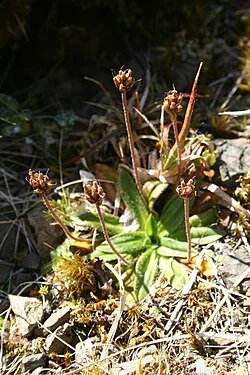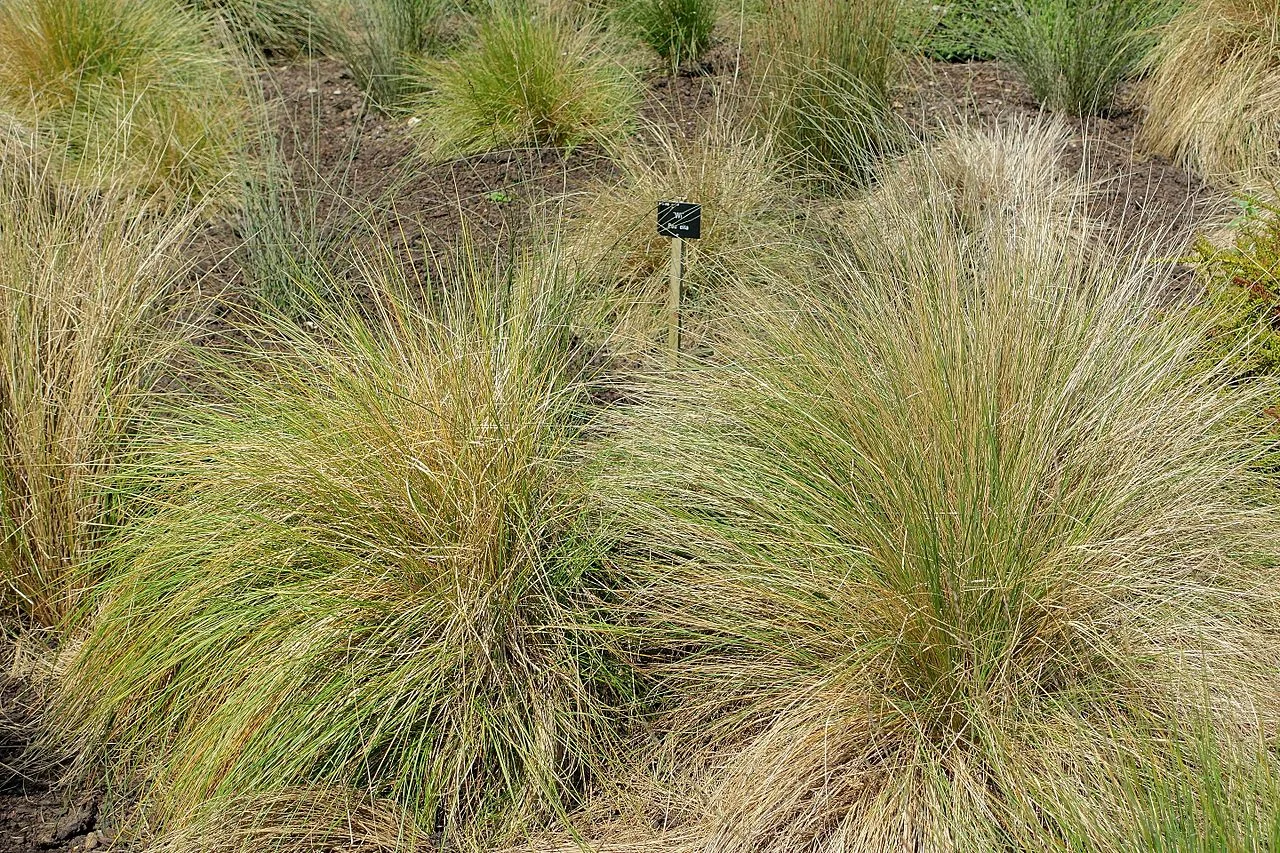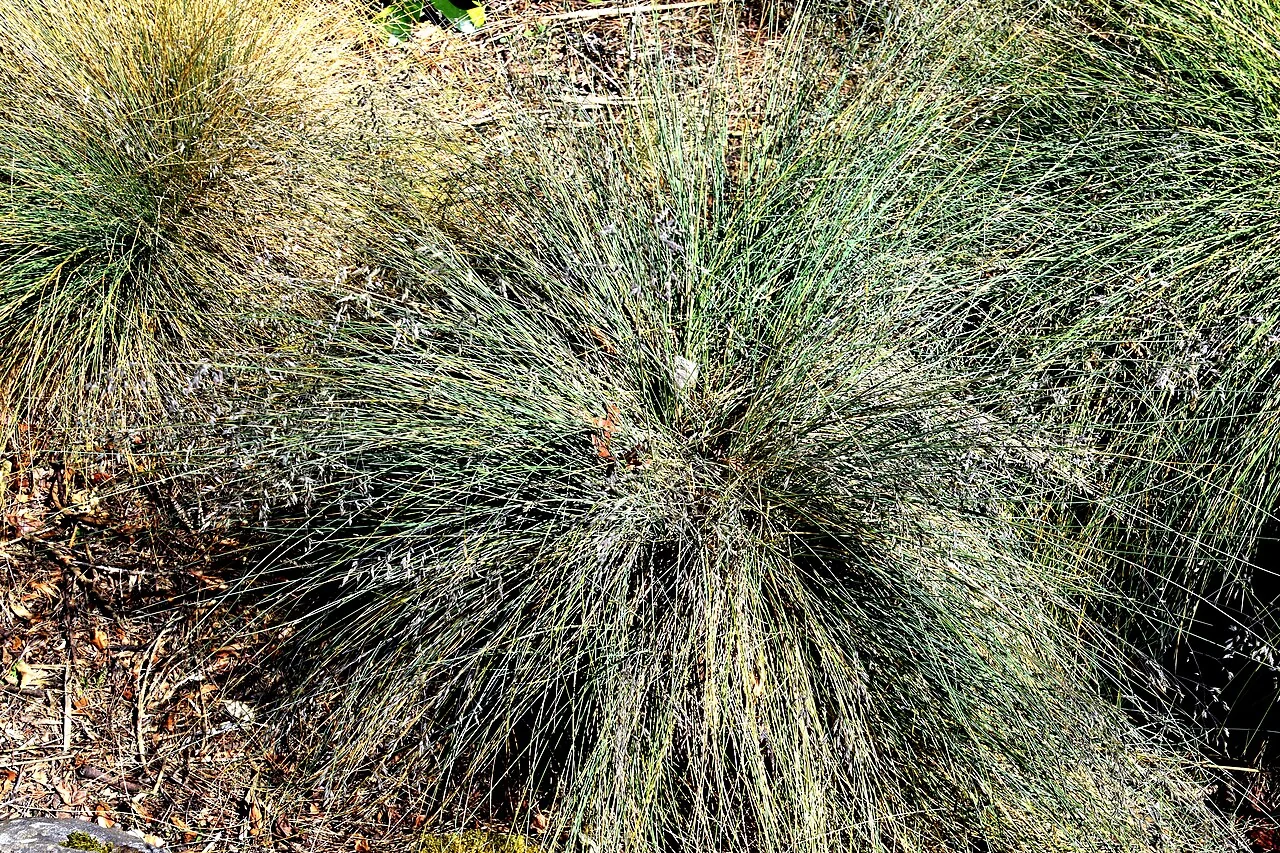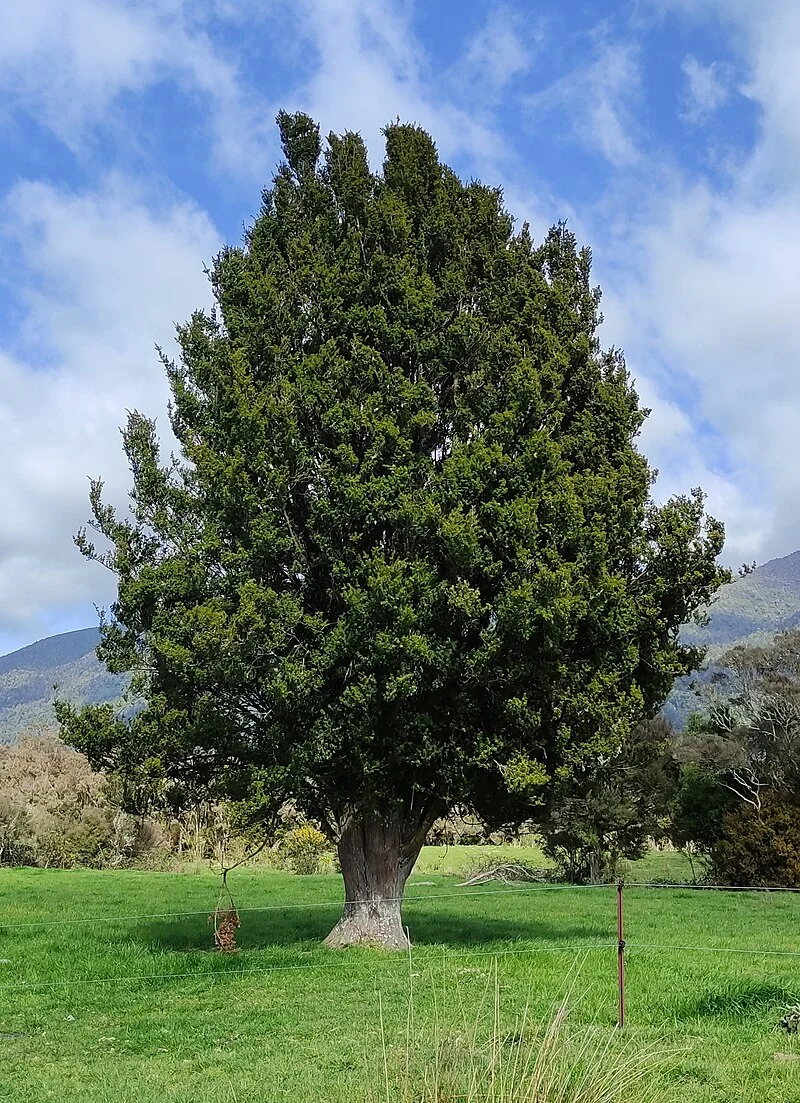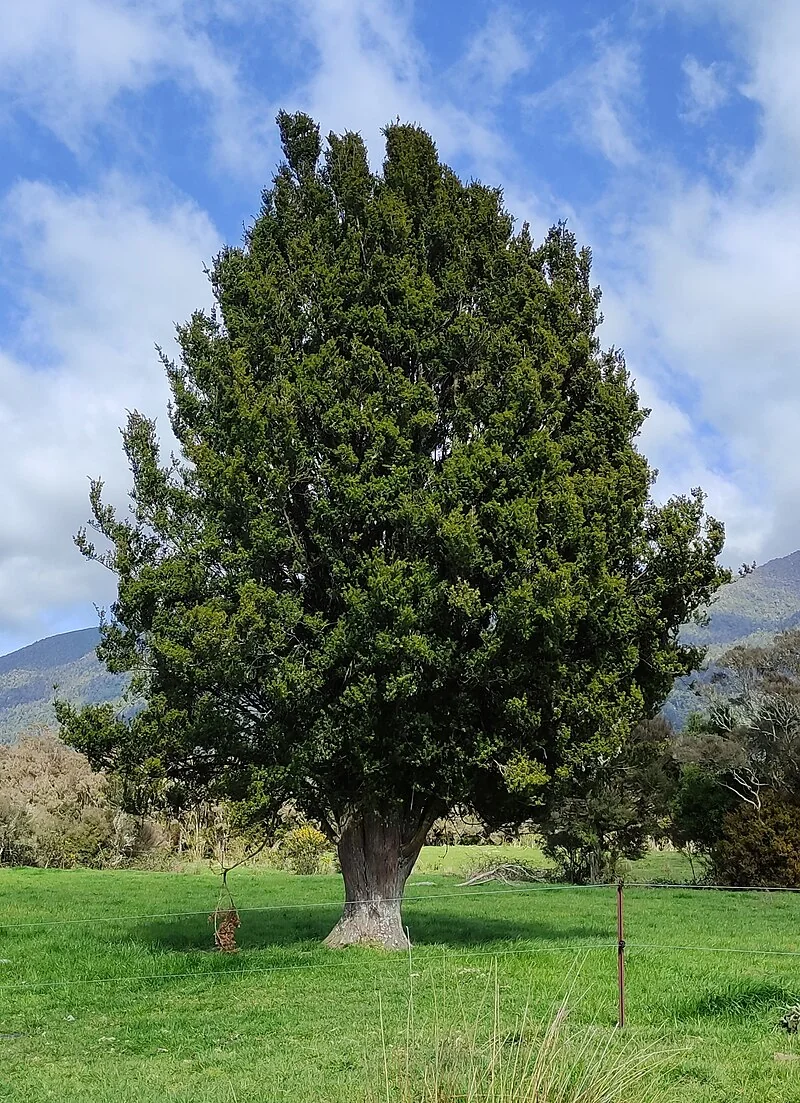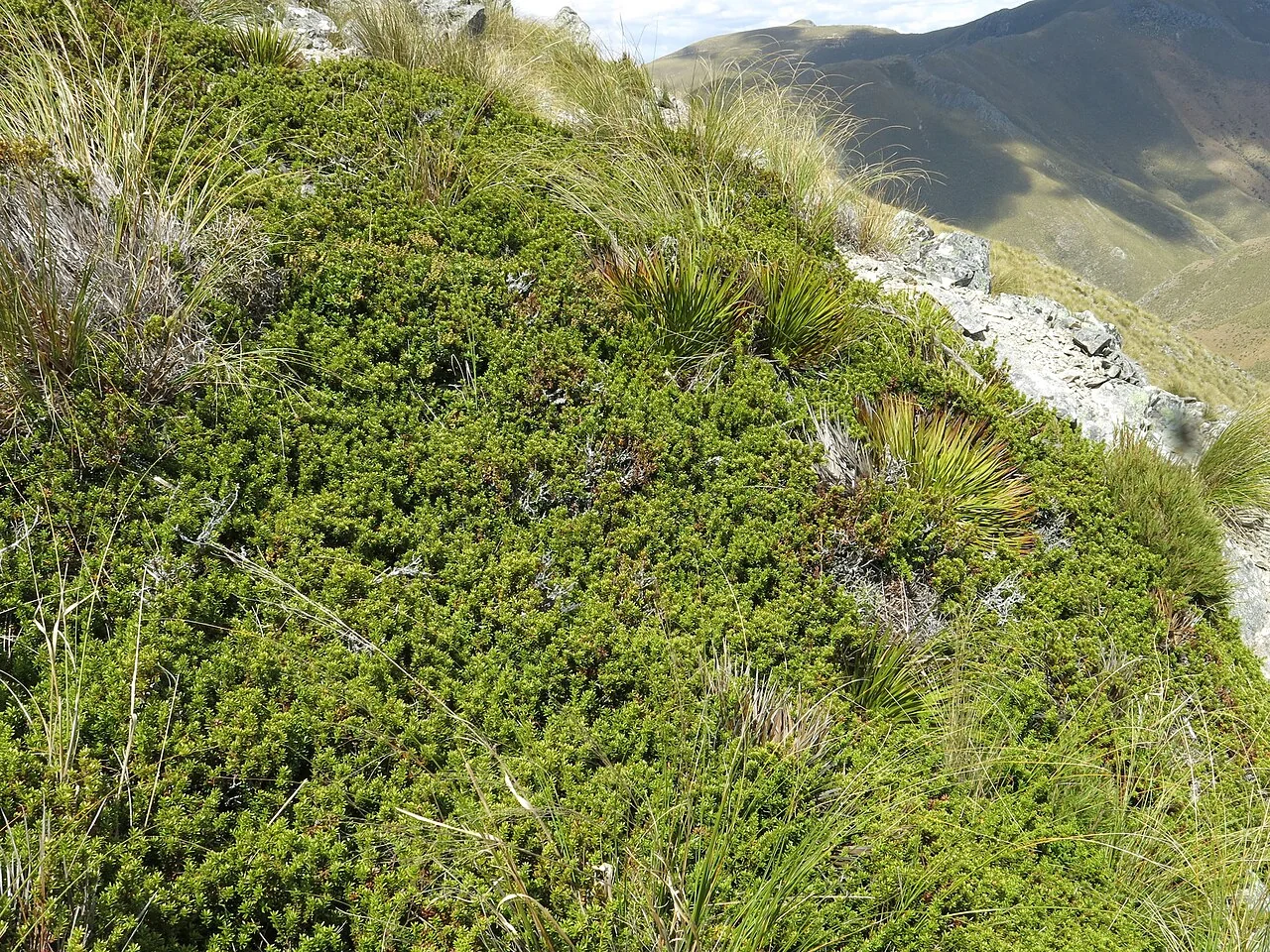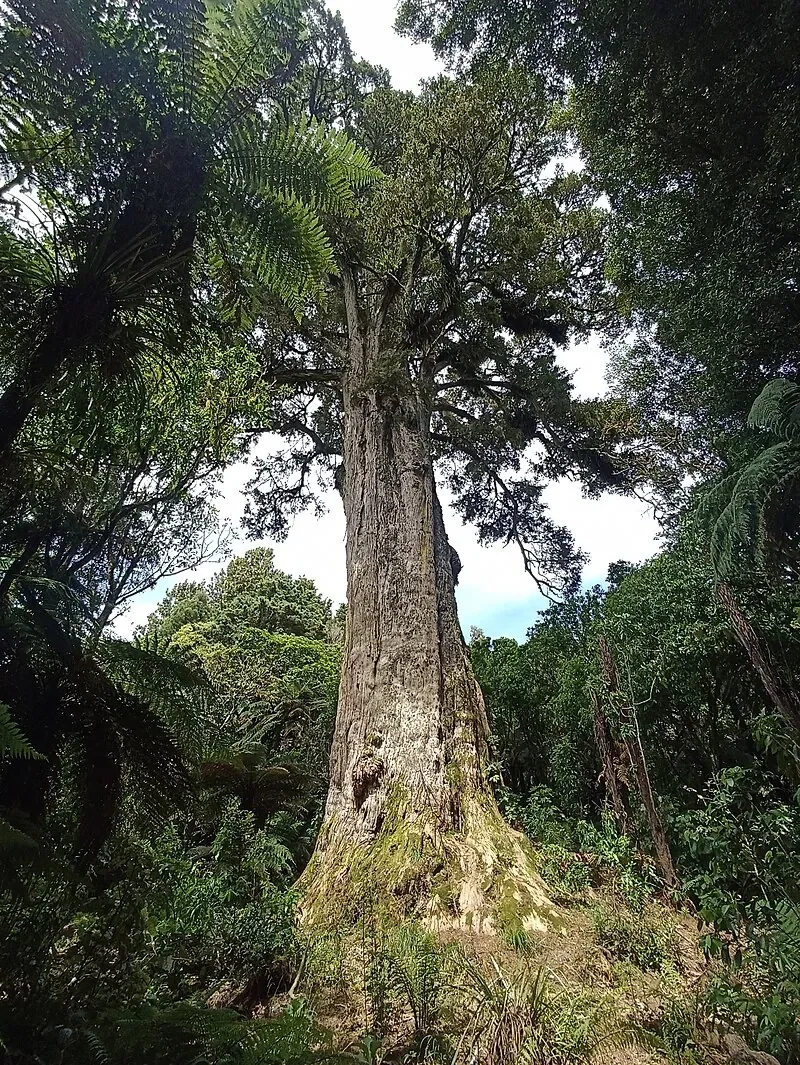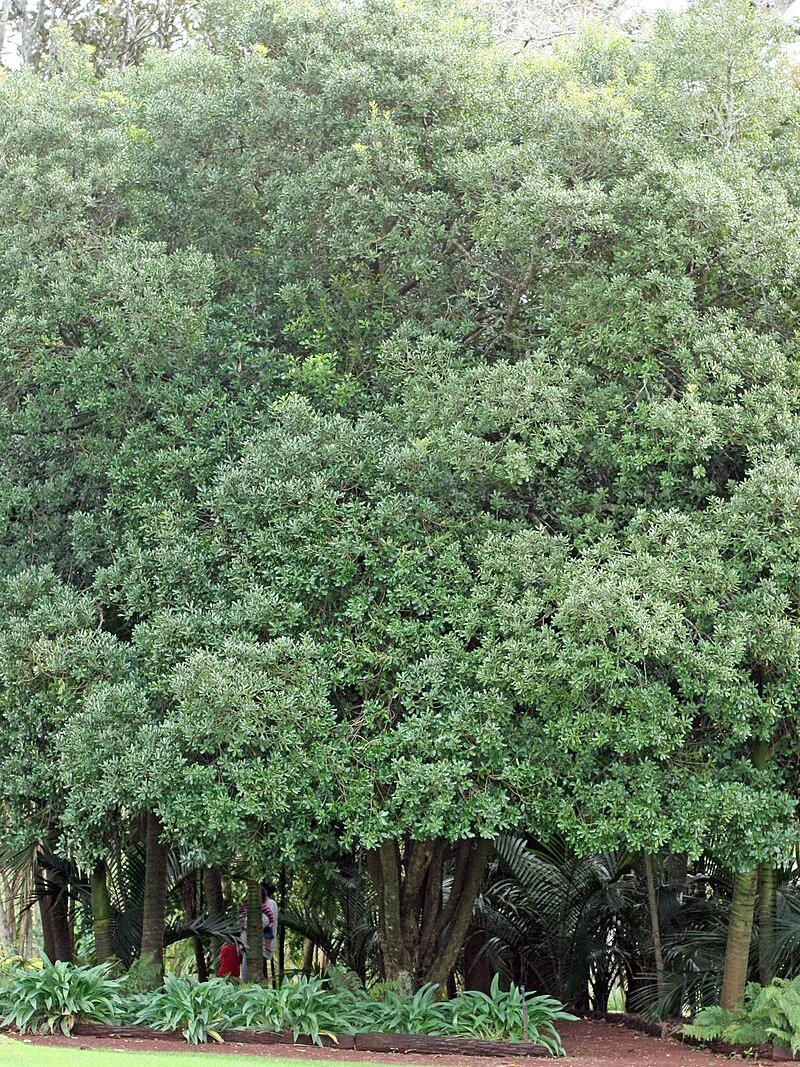
Tawapou
Introduction
Introduction Overview
Tawapou ( Planchonella costata ) is a small to medium-sized coastal tree native to the northern North Island of New Zealand and Norfolk Island. It is the sole representative of its genus in New Zealand, known for its glossy, dark green, leathery leaves and distinctive fleshy berries. Often found growing alongside p hutukawa and taraire in northern coastal forests, it represents an important component of New Zealand's coastal plant communities .

Plant Description
Botanical Features
Tawapou (Planchonella costata), also known as bastard ironwood, is a small to tall coastal tree. It can grow up to 18-20 meters tall with a trunk up to 1 meter in diameter. The bark is firm, greyish-white to grey-brown, and finely furrowed. Its branches are numerous, erect, and closely packed, with young branchlets and leaf stems covered in fine, flattened hairs. The leaves are leathery, yellow-green to dark green, and elliptic to obovate-oblong, measuring 40-150 mm long and 20-50 mm wide. They are lustrous on the upper surface and paler underneath, with prominent straight veins radiating from the central vein. The tiny, inconspicuous flowers are greenish to yellow-green, 3-6.2 mm in diameter, and typically grow in leaf axils or directly from branchlets. The tree produces fleshy, ovoid to ellipsoid fruits that are 2.5-5 cm long. These fruits ripen from green to orange, then to red, and finally to dark purple-black, enclosing 2-4 hard, shiny, curved seeds. The ripening process can take 12-15 months.
Quick Facts
Quick Facts Overview
| Scientific Name | Planchonella costata |
|---|---|
| Height | Up to 20 meters |
| Spread | Varies |
| Water Needs | Moderate (drought-tolerant once established) |
| Light | Full sun (prefers coastal conditions) |
| Frost Tolerance | Low (frost-tender) |
| Salt Tolerance | High (well-adapted to salt spray) |
| Growth Rate | Slow |
| Lifespan | Perennial |
Climate Suitability
Coastal Distribution
Tawapou is found locally on islands and headlands along the northern coasts of the North Island, from North Cape to Tolaga Bay on the east coast and as far as the Manukau Harbour on the west. It grows from sea level to about 450 meters, always close to the sea.
| City | Suitability |
|---|---|
| Whangārei | Ideal |
| Auckland | Ideal |
| Hamilton | Ideal |
| Tauranga | Ideal |
| Rotorua | Ideal |
| Gisborne | Ideal |
| New Plymouth | Ideal |
| Napier | Ideal |
| Whanganui | Ideal |
| Palmerston North | Ideal |
| Wellington | Ideal |
| Nelson | Ideal |
| Christchurch | Ideal |
| Dunedin | Ideal |
| Invercargill | Ideal |
Tawapou thrives in coastal environments and is frost-tender, making it best suited for warmer northern regions.
Natural Habitat
Natural Habitat Overview
Tawapou's natural habitat includes coastal forests, cliffs, and rocky headlands in the northern North Island of New Zealand. It thrives in exposed, salt-laden conditions, demonstrating its remarkable adaptation to harsh maritime environments.
Plant Conservation
The conservation status of Planchonella costata varies by region:
- Norfolk Island (Australia): It is listed as 'endangered' under the Australian Environment Protection and Biodiversity Conservation Act 1999.
- New Zealand: As of 2017, its conservation status is classified as 'At Risk - Relict', with qualifiers indicating Partial Decline (PD) and that it is Threatened Overseas (TO). It is considered "At Risk: Relict" in several North Island regions, including Northland, Auckland, Waikato, Bay of Plenty, and Gisborne.
Major threats to Planchonella costata include the consumption of its fruit and destruction of its seeds by rats, which significantly impacts its regeneration, and the clearing of coastal and lowland forests.
Prefers well-drained, sandy soils and full sun. Tolerates salt spray and coastal exposure.
Soil
Prefers well-drained, sandy soils; tolerates coastal conditions.
Light
Full sun.
Water
Moderate water needs; drought-tolerant once established.
Planting Guide
When to Plant
The best time to plant Tawapou is during spring or autumn when soil temperatures are moderate and rainfall is reliable, allowing for good establishment before extreme weather.
How to Plant
Dig a hole twice the width of the root ball and slightly deeper. Place the Tawapou tree in the hole, backfill with soil, and water thoroughly. Mulch around the base to retain moisture and suppress weeds.
Ecological Role
Wildlife Interactions
Tawapou plays a vital ecological role in coastal ecosystems. Its fleshy berries are a significant food source for native birds, particularly the kererÄā (New Zealand pigeon), aiding in seed dispersal. As a long-lived tree, it provides habitat and shelter for various coastal fauna.
Uses and Applications
Practical Applications
Tawapou has both historical and modern applications. Its durable seeds were traditionally used by Māori for necklaces, and its berries provide a food source for native birds.
In contemporary times, Tawapou is valued for coastal restoration plantings, large gardens, and parks in northern New Zealand due to its hardiness and aesthetic appeal.
Landscaping Uses
Landscaping Uses Overview
Tawapou is an excellent choice for coastal landscaping, large gardens, and restoration projects in frost-free areas. Its attractive glossy foliage, robust nature, and tolerance to harsh coastal conditions make it a valuable specimen tree. It can be used as a windbreak or a feature plant, contributing to biodiversity and aesthetic appeal.
Seasonal Care
Spring
Ensure new plantings are well-watered as temperatures rise. Monitor for early growth and general health.
Summer
Provide supplementary watering during dry spells, especially for young trees. Tawapou is drought-tolerant once established.
Autumn
An ideal time for planting new trees as cooler temperatures reduce stress. Ensure good drainage to prevent waterlogging.
Winter
Protect young trees from frost in cooler regions. Established trees are generally hardy in their native coastal habitats.
- Plant in well-drained soil
- Ensure adequate water for new growth
- Monitor general health
- Supplementary watering for young trees
- Monitor for drought stress
- Enjoy mature berries
- Ideal time for planting
- Ensure good drainage
- Collect seeds for propagation
- Protect young trees from frost
- Minimal maintenance required
- Avoid waterlogging
Pruning and Maintenance
Pruning and Maintenance Overview
Tawapou generally requires minimal pruning. Remove any dead, diseased, or damaged branches as needed. Light shaping can be done to maintain desired form, ideally in late winter or early spring before new growth commences.
How to Grow Tawapou
Tawapou (Planchonella costata) is best raised from fresh seed collected from fully ripe berries; cuttings are possible with careful technique but generally slower and less reliable. Young plants establish best in warm, coastal, frost-free sites with shelter from the harshest winds and well-drained soils.
From Seed
Harvest fruit when it turns deep orange to dark red/purple-black and yields easily to pressure. Remove all flesh to avoid fungal issues - soaking in lukewarm water helps soften the pulp - and scrub seeds clean. Sow promptly as a free-draining seed-raising mix is preferred; place seeds on the surface and cover lightly with fine medium. Keep evenly moist (never waterlogged) and maintain warm conditions (around 18-24°C) in bright, indirect light. Germination can be slow and irregular, taking several weeks to a few months. Pot on seedlings once roots are well-developed, growing them on in a sheltered, sunny position with steady moisture.
From Semi-Hardwood Cuttings
Take 8-12 cm semi-hardwood cuttings in late summer to early autumn from healthy, non-flowering shoots. Remove the lower leaves, reduce remaining leaf area by half, and make a clean basal cut just below a node. Dip the base in an IBA rooting hormone and insert into a very free-draining propagation medium (e.g., coarse perlite with fine bark). Provide high humidity (mist bench or covered propagator), gentle bottom heat around 20°C, and bright filtered light. Maintain moisture without saturation. Expect variable success and slower rooting; pot on only after firm roots form.
Planting and Establishment
Site in full sun to light shade in frost-free, coastal climates. Provide a well-drained soil improved with organic matter. Water regularly during the first two summers; reduce as plants establish deep roots. Apply a balanced, slow-release fertiliser in spring at label rates. Mulch annually to conserve moisture and suppress weeds, keeping mulch clear of the trunk. Prune lightly to shape and remove damaged or crossing growth - avoid heavy cuts that can stress the tree.
Pests and Diseases
Common Pests
Tawapou is generally a robust tree and resistant to most common pests. However, like many native trees, it can occasionally be susceptible to generalist pests if under stress.
Disease Prevention
To prevent diseases, ensure Tawapou is planted in well-drained soil and has good air circulation. Avoid overwatering, especially in cooler months. Remove any diseased plant material promptly to prevent spread.
Cultural Significance
Planchonella costata, known as tawÄāpou in Māori culture, holds significant cultural importance, particularly in New Zealand.
Key Aspects of Its Cultural Significance Include:
- Canoe Rollers and Memorials: Tawapou logs were traditionally used by Māori as rollers to help bring large canoes (waka) ashore. A prominent legend in Northland Māori traditions recounts that tawapou trees grew from canoe rollers brought from Hawaiki by the 'Waipapa' canoe, serving as a living memorial to its arrival in Doubtless Bay. Similar stories are associated with groves of tawapou trees at Houhoura Harbour and Aurere Beach. The name 'tawÄāpou' itself may be derived from 'Tawa-a-Pou', meaning 'the Tawa trees of Pou', referencing an ancestor who arrived on the Mamaru canoe.
- Adornment: The distinctive hard, curved, and polished seeds of the tawapou were highly valued by Māori, who strung them together to create necklaces, particularly for important individuals.
- Food Source and Legends: The berries of Planchonella costata were a food source for native birds, such as the kÄākÄā parrot, which, according to a legend from East Cape, consumed them to sustain themselves during long flights from Hawaiki. The fruit is also a favored food of the native pigeon, the kerer� «.
- Traditional Medicine: In traditional Māori practices, a lotion made from boiling the pulp of the berries was used to alleviate sprains and bruises, and a decoction of the fruit was believed to help lower blood pressure.
- Historical Presence: The presence of Planchonella costata in some southerly locations is linked to ancient Māori fortified settlements (Pa sites), suggesting that the species might have been intentionally planted by Māori in these areas.
Bonus Tip
Tawapou (Planchonella costata) has a fascinating ecological interaction with kiore (Pacific rats). While the berries are a food source for native birds, kiore are known to consume the kernels of the seeds. Interestingly, kiore often carry these seeds to "husking stations" where they remove the kernels, leaving behind piles of discarded husks. Research has shown that the population of juvenile tawapou trees significantly increases on islands where kiore have been eradicated, highlighting the negative impact of these rodents on the tree's natural regeneration.
